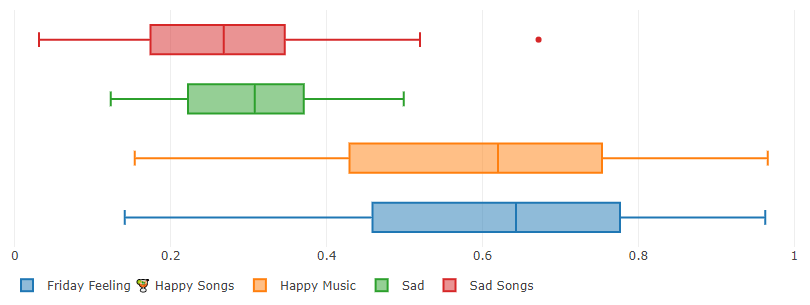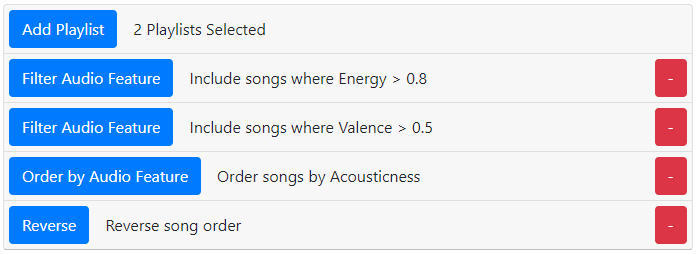Create emotionally gradiented Spotify playlists and more.
- Clone the repo
- Execute
npm install - Execute
npm start
After following these steps, a new browser tab will open with the locally hosted application in development mode.
- Create a new app / client id at developer.spotify.com.
- Copy your client id into
/src/config.ts. - Click "Edit Settings" in the newly created Spotify developer app and add a redirect URI to where
/api/spotify/authentication-callbackwill be hosted.
Example Sort Visualisation of a Personal Playlist
Example Comparison Visualisation of a Personal Playlists
Example of Applying Filters to Playlists
- Spotify authorization for library access
- Sort a playlist by valence and energy - Sorting on these two values can create a transition from sadder/slower songs to more happy/energetic songs. - Can change the sorting audio features and sorting method - Exports to a new playlist
- Compare playlists - Compare multiple playlists in 1D, 2D or 7D from selected audio features.
- Playlist tools - Add playlists and apply filters and functions to playlists to manipulate song ordering - Exports to a new playlist
All audio features used are pre-computed by Spotify and obtained through their API.
Emotionify is an application I had thought about for a few years after doing a project at university on attempting to detect emotion in music and portraying it in an interactive environment.
I was curious how the method implemented would play out with music I listen to every day and wanted some extra tools for Spotify playlists.
Emotionify is not 100% accurate as emotion is highly opinion based and the values used to sort songs are averages over the whole song. This tool however does give insight on how well a computer can plot an emotional gradient with a list of songs.



